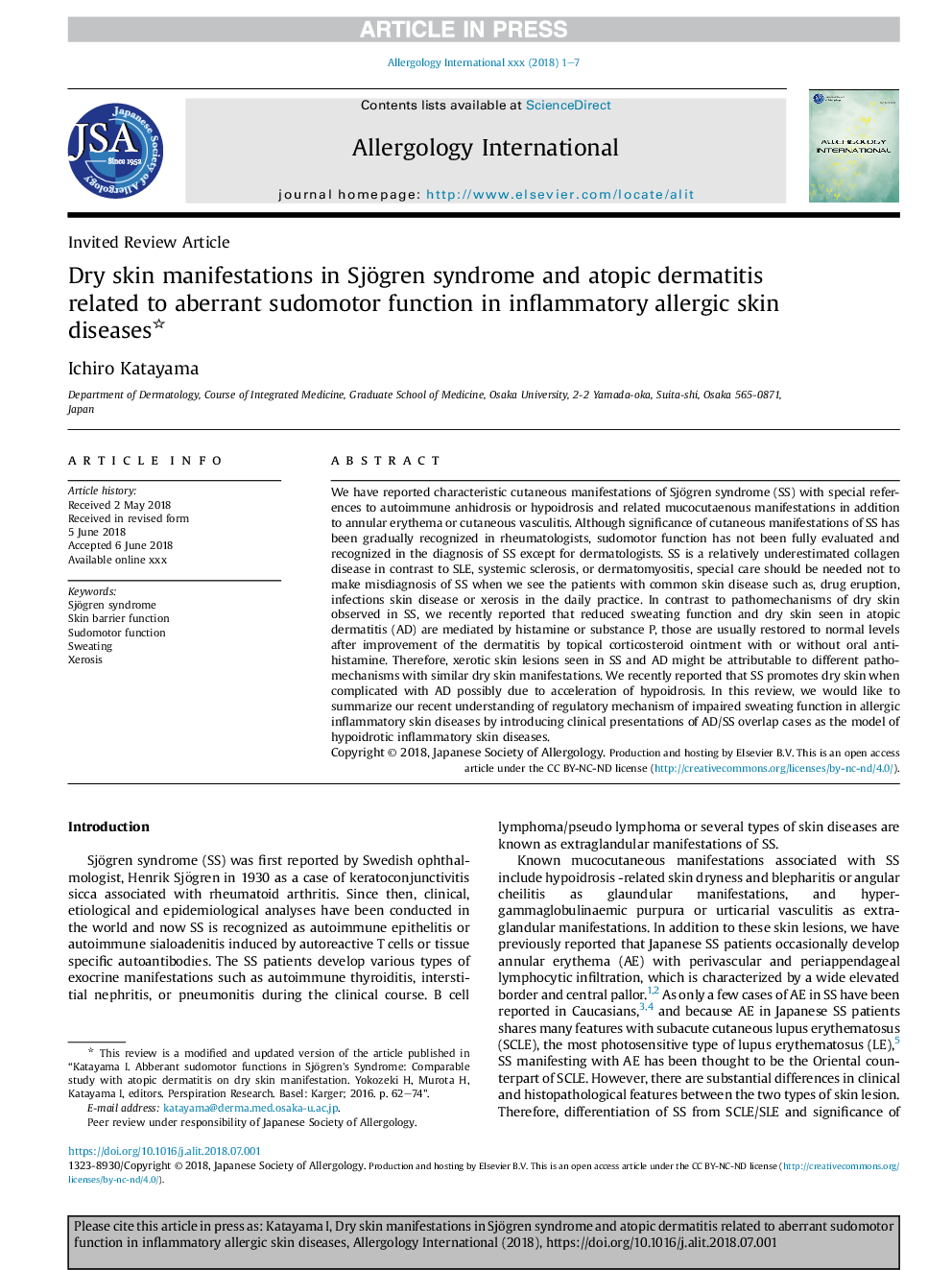| Article ID | Journal | Published Year | Pages | File Type |
|---|---|---|---|---|
| 11014255 | Allergology International | 2018 | 7 Pages |
Abstract
We have reported characteristic cutaneous manifestations of Sjögren syndrome (SS) with special references to autoimmune anhidrosis or hypoidrosis and related mucocutaenous manifestations in addition to annular erythema or cutaneous vasculitis. Although significance of cutaneous manifestations of SS has been gradually recognized in rheumatologists, sudomotor function has not been fully evaluated and recognized in the diagnosis of SS except for dermatologists. SS is a relatively underestimated collagen disease in contrast to SLE, systemic sclerosis, or dermatomyositis, special care should be needed not to make misdiagnosis of SS when we see the patients with common skin disease such as, drug eruption, infections skin disease or xerosis in the daily practice. In contrast to pathomechanisms of dry skin observed in SS, we recently reported that reduced sweating function and dry skin seen in atopic dermatitis (AD) are mediated by histamine or substance P, those are usually restored to normal levels after improvement of the dermatitis by topical corticosteroid ointment with or without oral anti-histamine. Therefore, xerotic skin lesions seen in SS and AD might be attributable to different pathomechanisms with similar dry skin manifestations. We recently reported that SS promotes dry skin when complicated with AD possibly due to acceleration of hypoidrosis. In this review, we would like to summarize our recent understanding of regulatory mechanism of impaired sweating function in allergic inflammatory skin diseases by introducing clinical presentations of AD/SS overlap cases as the model of hypoidrotic inflammatory skin diseases.
Related Topics
Health Sciences
Medicine and Dentistry
Immunology, Allergology and Rheumatology
Authors
Ichiro Katayama,
